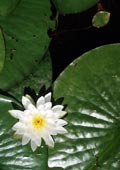
Insight
Canoeing is a way to sit still and pay attention.
 |
InsightCanoeing is a way to sit still and pay attention.
|
Canoe TripsBoundary Waters:
Boats & GearBoundary Waters Gear ListWenonah Prism (sold)
|
Bell Wildfire (Royalex)The Wildfire has an odd history. Bell Canoe Works made it until about 2006, when Placid Boatworks took over construction in composite materials of graphite and kevlar. Bell continues to make the Royalex version under the name Yellowstone Solo, perhaps because of its similarity to the Yellowstone, which is a tandem boat. In October of 2001 I bought a slightly used Bell Wildfire in Royalex. Initially, I found it to be a tender boat with limited initial stability and very unpredictable secondary stability. After paddling it very conservatively (in order to stay dry) for a few years I finally decided to take my friend Tom's advice and install longer thwarts in the hope of adding enough flare to improve its secondary stability. The short story is ... it worked. This boat has been modified with two-inch longer main thwarts placed five inches closer to amidships. I cut down the original thwarts and placed them about 20 inches from the main thwarts in order to support the gunwales, which had kinked slightly from the tension of the flotation bags' lacing. With six thwarts (including the carry thwarts) the boat is fairly rigid and responds well to inputs through the knees and thigh straps. This setup added enough flare to approximate the hull contours of its composite siblings, though it's now two inches wider. Although I also paddle a composite Wildfire, I generally do not notice the additional width. It is also stable enough to lean to the rail with consistent resistance, which enables it to do basic freestyle maneuvers. The longer thwarts also induced another one-half inch or so of rocker, which makes it slightly more maneuverable. It isn't a true whitewater boat but it will handle Class II+ rapids if handled carefully. I've enjoyed several solo trips on the Flambeau, Wolf and Bois Brule Rivers in this boat. Here's my friend Gary approaching a solid Class II rapids on the Wolf River in the spring of 2006. His objective on this trip was to stay dry and he succeeded.
Setup for WhitewaterFollowing are a few pictures showing how the boat is set up for whitewater, except for the thigh straps. The only time they're needed is when paddling complex, rock-filled rapids that require quick heeling movements (e.g., the Wolf). The whole setup (minus thigh straps) after removing the woodwork, putting several coats of varnish on the seat, and re-oiling the thwarts:
Facing forward, the bow flotation bag (this bag is new, having replaced the earlier one that had become a winter home for a family of mice); in this picture the kink mentioned above can be seen on the right side between the thwarts:
Facing aft, the seat:
The knee pads and D-ring for the thigh straps:
And finally the stern bag:
I also have a Bell Wildfire in BlackGold, and my (ex-)wife has one in KevLight. Pictures of these boats on the Kickapoo and Mecan Rivers can be seen on another page of this site.
|
Comments and suggestions welcome. Feel free to e-mail
me.
Last updated
October 9, 2010
Brought to you by Codabone Productions ©2009
